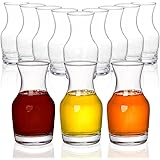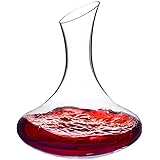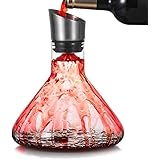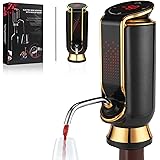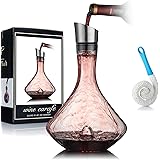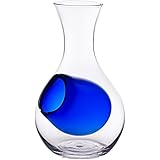Demystifying Wine: An Approachable Intro to Wine for Beginners
For many, the world of wine can feel like an exclusive club with secret handshakes and an intimidating vocabulary. You might stand in the wine aisle, overwhelmed by rows of labels, vintages, and varietals, unsure where to begin. However, as the video above brilliantly illustrates, enjoying wine doesn’t require a sommelier’s expertise; it’s genuinely for everybody. This guide aims to pull back the curtain, offering an easy-to-understand introduction to wine that builds upon the insights shared in the video, empowering you to explore and savor every sip with confidence.
Wine, at its core, is a simple pleasure that has graced tables for millennia. It’s a conversation starter, a meal enhancer, and a testament to the magic of nature and human craftsmanship. Forget the snobbery and perceived complexity; let’s embark on an exciting journey to uncover the fundamental aspects of wine, making it accessible for every palate.
What is Wine? The Essence of the Grape
At its most basic, wine is an alcoholic beverage born from the fermentation of grape juice. While other fruits can be used, wine grapes are the standard bearers, cultivated specifically for their unique properties. Unlike the plump table grapes you might snack on, wine grapes are typically smaller, boast thicker skins, and contain numerous seeds, all contributing to the wine’s character.
When these specialized grapes ripen, their natural sugars become highly concentrated. This sweetness is crucial, as it’s these sugars that yeast consumes during fermentation, magically converting them into alcohol. The entire journey, from tiny bud to ripe grape, spans an entire growing season, meaning wine production from a specific harvest only happens once a year. This annual cycle is precisely why the concept of “vintage” holds significance.
A vintage, prominently displayed as a year on a wine label, tells you when the grapes were harvested for that particular bottle. For instance, a 2020 Pinot Noir indicates the wine was made from grapes picked in 2020. Conversely, a 2019 bottle of the same wine will likely taste different, not because of a change in recipe, but due to the subtle variations in climate, soil, and atmosphere that year. Think of it like a chef using the freshest, seasonal ingredients; each year’s harvest offers a distinct essence. However, not all wines carry a vintage; some, especially certain sparkling wines like Champagne, are non-vintage (NV) blends, combining grapes from multiple years to achieve a consistent house style.
Varietals and Blends: Understanding Your Bottle
When you glance at a wine label, a common term you’ll encounter is “varietal.” Simply put, a varietal refers to the specific type of grape used to make the wine. So, if your bottle proudly declares “Pinot Noir,” that’s the grape variety predominately contributing to its flavor profile.
However, it’s not always a single grape acting solo. Regulations vary by country, but in the United States, a wine must typically contain at least 75% of the stated varietal to bear its name. Interestingly, Oregon State, renowned for its Pinot Noir, raises that bar to 90%. If a wine doesn’t meet this minimum threshold, it becomes a “blend,” a harmonious combination of two or more grape varietals. For example, the video showcased a delightful French blend of 60% Sémillon and 40% Sauvignon Blanc, where each grape contributes unique characteristics to the final wine. Blending allows winemakers to achieve greater complexity, balance, or consistency, much like a painter mixing colors to create a richer hue.
The Winemaking Journey: From Vine to Glass
The transformation of grapes into wine is a fascinating, multi-step process, with each stage offering winemakers opportunities to impart their unique touch. The journey typically begins with the harvest, where grapes are carefully picked, often by hand, ensuring only the finest specimens proceed. These selected grapes are then crushed, a crucial step that releases their juice.
This is where the paths of red and white wines diverge dramatically. For red wines, the grape skins, seeds, and stems are left in contact with the juice, forming what’s called “must.” This skin contact is vital because it’s where red wine gets its vibrant color, not from the juice itself, which is clear in almost all grapes. More than just color, the skins also impart tannins, natural compounds that contribute to the wine’s texture and aging potential. Tannins create that distinctive drying sensation in your mouth, similar to very strong black tea or biting into an unripe persimmon.
For white wines, the skins are typically removed immediately after crushing, resulting in a clear juice that ferments without the influence of skin contact. Regardless of color, the must then undergoes fermentation, where yeast consumes the grape sugars, producing alcohol and carbon dioxide. This process usually yields wines with an alcohol content between 10% and 15% ABV.
Following fermentation, the wine is clarified, removing any sediment or residual yeast cells to achieve a clean, appealing appearance. Finally, the wine is either bottled immediately or aged further. Aging can occur in stainless steel tanks, allowing the wine to maintain its fresh, fruit-forward character, or in oak barrels. Oak aging introduces a whole new dimension of flavor, imparting notes of vanilla, spice, toast, or even subtle smokiness, depending on the type and age of the barrel. This aging process allows the wine’s flavors and aromas to evolve, becoming more integrated and complex over time, much like a fine stew simmered to perfection.
Old World vs. New World: A Global Perspective
Wine is a global phenomenon, produced in nearly every corner of the world, yet distinct styles emerge from different regions. These are broadly categorized into “Old World” and “New World” wines, a distinction that speaks more to tradition and winemaking philosophy than actual age.
Old World wines hail from regions with centuries, even millennia, of winemaking history, primarily in Europe. Think of France, Italy, Spain, and Germany. These wines often emphasize ‘terroir’ – the unique combination of climate, soil, and landscape that shapes the grape. Old World wines tend to be more earthy, savory, and less overtly fruity, with a focus on tradition and regional characteristics over individual grape varietals. They are often lighter in body and higher in acidity, designed to complement food rather than dominate it.
Conversely, New World wines originate from regions where winemaking gained prominence more recently, including North and South America, Australia, New Zealand, and South Africa. These wines typically showcase the varietal itself, aiming for bolder fruit flavors and often a higher alcohol content. New World winemakers often embrace innovative techniques and technology, prioritizing ripe fruit and consumer-friendly styles. This contrast explains why a Pinot Noir from Burgundy, France (Old World) can taste remarkably different from one produced in Oregon (New World), offering two distinct expressions of the same grape.
Overcoming Wine Intimidation: The Joy of Discovery
The host of the video eloquently states that wine is “for the people,” challenging the notion that it’s solely for an elite few. The immense variety of wines, from different vintages and regions, can indeed be daunting. For example, you might try a Pinot Noir and love it, then try another and dislike it, leading to confusion about your preferences. However, this diversity is also wine’s greatest strength, inviting endless exploration rather than demanding rigid adherence to rules.
The key to enjoying wine lies in personal discovery. Don’t feel pressured to identify every subtle aroma or declare a perfect vintage. Instead, focus on what you enjoy. Is it bright and refreshing? Rich and bold? Sweet or dry? Your palate is the ultimate authority. Services like Bright Cellars, featured in the video, exemplify this approach. By taking a simple taste questionnaire and rating the wines you receive, their algorithm learns your preferences, guiding you toward bottles you’re likely to love. It’s like having a personal sommelier who speaks your language, making wine exploration both exciting and effortlessly enjoyable.
A Guided Tasting Journey: Exploring White and Red Wines
As the video demonstrates, tasting wine is a multi-sensory experience that combines sight, smell, and taste. Swirling the wine in your glass helps release its aromatic compounds, allowing you to discover a wider range of scents before taking your first sip. Here’s a deeper dive into the wines tasted in the video, along with general characteristics to enhance your understanding:
White Wines:
- Sémillon/Sauvignon Blanc Blend (Post Haste, France): This classic French blend offers a refreshing, vibrant character. Sauvignon Blanc typically brings bright acidity, citrus notes (like grapefruit), and sometimes herbaceous or grassy undertones. Sémillon, on the other hand, contributes body, richness, and often notes of melon or honey as it ages. The blend creates a harmonious white wine that is both zesty and substantial, ideal for sipping on a warm day or pairing with light seafood. The host noted its grapefruit and grassy aromas, while Auz detected melon, highlighting the blend’s refreshing and thirst-quenching qualities.
- Riesling (2019, Washington State): Riesling is incredibly versatile, ranging from bone-dry to lusciously sweet. This semi-sweet example from Washington State showcases Riesling’s aromatic charm. Known for its floral notes, often reminiscent of jasmine or honeysuckle, Riesling can also present stone fruit flavors like peaches or apricots. Its inherent acidity beautifully balances the sweetness, making it remarkably refreshing. The hosts described this particular Riesling as floral, embracing, silky, smooth, and peachy, indicating a delightful, textured experience that’s perfect for those who enjoy a touch of sweetness.
- Unoaked Chardonnay (2019, Wellfleet, California): Chardonnay is one of the world’s most widely planted white grape varietals, but its style varies dramatically based on winemaking. Unoaked Chardonnay, like this California example, avoids contact with oak barrels, allowing the pure expression of the grape to shine. Expect flavors of green apple, pear, and citrus, with a lean, crisp minerality. In contrast, oaked Chardonnay often develops richer, buttery, and vanilla notes. The Wellfleet Chardonnay was described as minerally, creamy, with notes of sweet apple and a hint of “funkiness,” suggesting a complex, textural wine that diverged from typical fresh white wine profiles. This stylistic choice offers a fascinating comparison point for understanding Chardonnay’s potential.
Red Wines:
- Pinot Noir (2020, Vanishing Act, Willamette Valley, Oregon): Pinot Noir is often described as the “heartbreak grape” because it’s notoriously difficult to grow but yields some of the world’s most elegant wines. It’s a lighter-bodied red, known for its delicate aromas of red fruits like cherry and strawberry, intertwined with earthy notes of mushroom, forest floor, or even “barnyard” (a term for a rustic, savory aroma). The Pinot Noir tasted was noted for its lighter, bluish-purple hue and complex aromas of strawberry, mushroom, and woodsy “funk.” Its inherent tannins provided a noticeable drying effect, characteristic of red wines. This varietal is incredibly food-friendly, pairing well with everything from salmon to roasted chicken.
- Sangiovese (Italian Red): The backbone of Italy’s famed Chianti, Sangiovese is a robust, rustic red wine. It typically presents a medium to full body with firm tannins and bright acidity. Flavor profiles often include sour cherry, plum, tomato leaf, and savory herbs. This Italian Sangiovese had a “bloody red” or “rusty” color. The hosts detected floral notes, specifically roses, along with cherry and a “dirty” or “pine” quality, ultimately settling on “rustic.” Its significant tannic structure was also very apparent, emphasizing its traditional Italian character. Sangiovese truly shines when paired with hearty Italian dishes, from pasta with rich sauces to grilled meats.
- Cabernet Sauvignon (California): Cabernet Sauvignon is arguably the world’s most popular red wine varietal, renowned for its full-bodied structure and bold flavors. Typically a “bigger red,” it’s often aged in oak, which contributes notes of vanilla, cedar, and spice, alongside its characteristic dark fruit flavors like blackcurrant, blackberry, and plum. This Californian Cabernet Sauvignon was anticipated as a “big bomb of flavor” and delivered with its rich, dark fruit profile, notes of wood, vanilla, and leather, and a surprising sweetness. The distinct taste of prunes was noted, highlighting its concentrated, heavy-hitting style, which is often favored by those who enjoy powerful red wines, especially alongside red meats or strong cheeses.
The journey into wine is one of continuous discovery. As you saw in the video, even experienced tasters find new notes and interpretations. Don’t hesitate to explore new bottles, embrace the differences, and find what truly resonates with your palate. And remember, services like Bright Cellars are there to simplify that exploration, offering a personalized path to finding your perfect wine. Take advantage of special offers, like 50% off your first six-bottle box of wine through the host’s link, and start your delightful wine adventure today.


